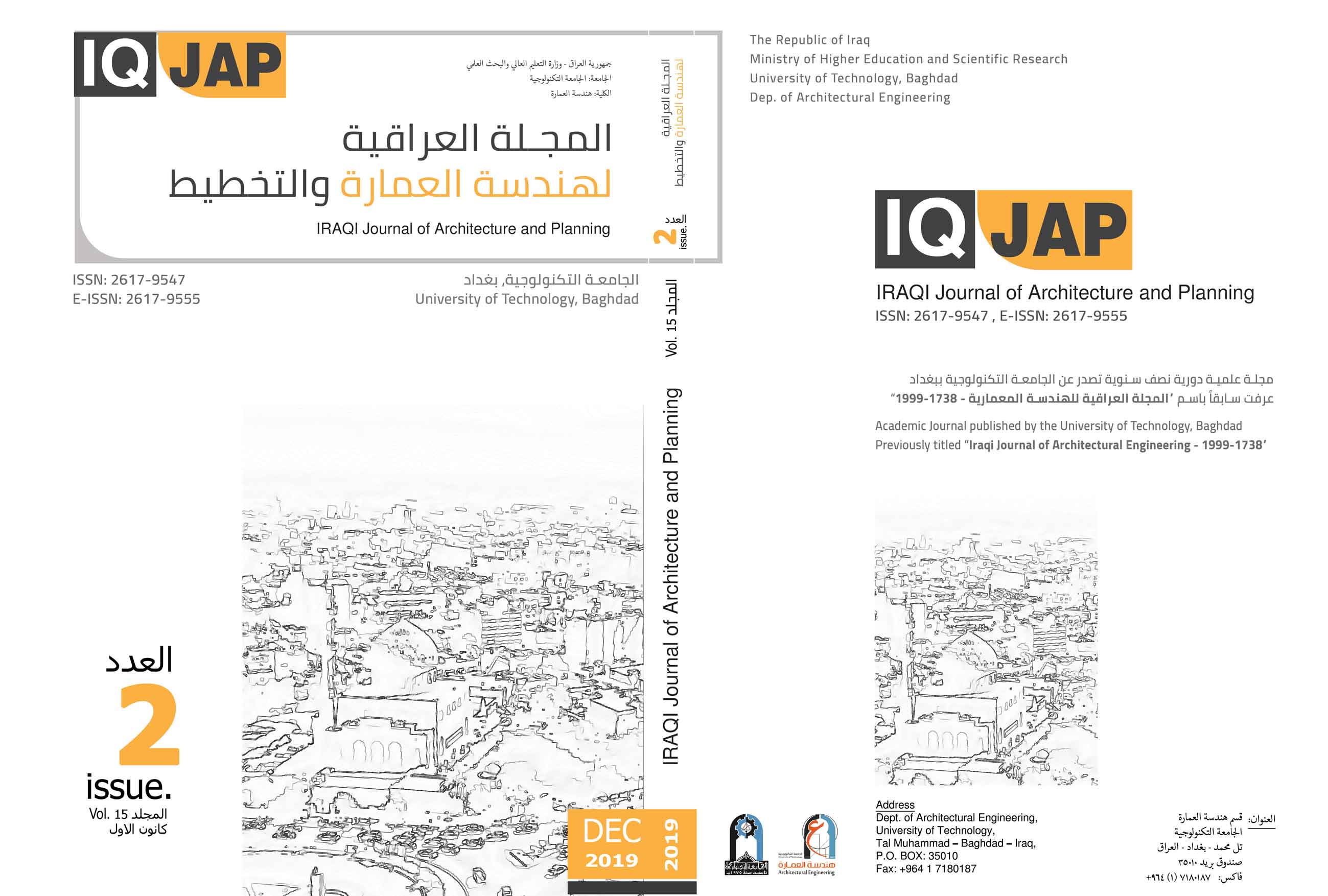Pre-manufacturing techniques and their role in achieving residential efficiency
Steel plate technology problem galvanized cold - a model
Abstract
Technology is an essential aspect in all fields, and its presence is an active presence that represents the vision of architecture and enhances its orientation. In addition to providing practical solutions that increase the value of architectural facilities and enhance their efficiency, and due to the profound impact of technology, there is a need to test their products, especially in the field of housing, where technology is a two-edged dimension that enhances the positive aspects and can pose a number of problems.
In this context, a number of construction technologies are being offered as a solution to architecture, especially in the area of ​​housing. These techniques include pre-fabrication using cold-rolled steel plates, which present themselves as an appropriate, efficient, economical and quick solution to solve the housing problem. The objective of the study is to: Examine the aspects of this technique and measure its advantages by measuring its efficiency in the specific aspects of housing.
According to the objective of the study, it took four procedural steps. The first was a statement of the cognitive aspects and frameworks for the construction of the buildings and their specific objectives, and technical aspects and dimensions (pre-fabrication using light-alloy iron).
The second step is to develop a theoretical framework for the performance aspects and features adopted for building techniques, which is a base through which the selected technology features can be measured as a study objective.
And then move (under third procedural step) - to measure the specific aspects of the theoretical framework and apply it to a number of projects approved for this technique, under a technical and field study. And then the fourth procedural step represented by drawing conclusions from the empirical study and the general and detailed conclusion
Downloads
References
PADCO, United Nations Human Settlements Program (UN-HABITAT), Consultative Group for Development and Reconstruction-Jordan, Ministry of Planning and Development Cooperation and Central Bureau of Statistics and Information Technology-Iraq, "Iraq Housing Market Study" Main Report, 2006, Baghdad / Iraq
Badran and Sayegh, Ibrahim Badran and Estifan Sayegh, 1976, "On Climatic and Social Considerations for High Buildings in Iraq", Paper presented at the Ready Building Symposium, Building Research Center, Scientific Research Foundation, Arab Printing House, Baghdad, Iraq, 1-4. 1976.
Barsoum, Matti, 1976, "Construction of Low-Income Housing Projects in a Prefabricated Modular Method", Paper presented at the Prefabricated Building Symposium, Building Research Center, Scientific Research Foundation, Arab Printing House, Baghdad, Iraq, 1-4-1976.
Al-Khafaji and others, Ali Mohsen Jafar Al-Khafaji and Asmaa Mohammed Hussein Abdul Razzaq and Uday Abbas Abboud, 2011, "The Performance of the Building, An Evaluation Study of the Performance of Prefabricated Residential Buildings - Al Salam Residential Model", Iraqi Journal of Architecture, Seventh Year, Twenty-second Issues And twenty-third and twenty-fourth, Department of Architecture, University of Technology, Iraq, Baghdad.
Ministry of Planning, National Development Plan 2010-2014, Iraq Baghdad.
Ministry of Housing and Construction, National Housing Policy in Iraq, 2010, Iraq, Baghdad.
Benkamoun and other : Nadège Benkamoun, Waguih ElMaraghy, Anne-Lise Huyet, Khalid Kouiss, 2014, "Architecture Framework for Manufacturing System Design", Variety Management in Manufacturing. Proceedings of the 47th CIRP Conference on Manufacturing Systems.
Kolarevic, Branko, 2000, "Digital Architectures", In Proceedings of the ACADIA 2000 Conference, eds. M. Clayton and G. Vasquez. Washington, DC: Catholic University of America, USA.
DUNN , NICK, 2012,"DIGITAL FABRICATION IN ARCHITECTURE", Laurence King Publishing Ltd, London, UK.
Editor, 2013 , " 1884 housing units were completed in the Republic of Iraq within 7 months", Karmod company website, https://blog.karmod.ae/%d9%81%d9%8a-
Editor , 2019, "Framecad", https://www.framecad.com .
Editor, 2014," Al-Radwan general Company implements Al Karama Residential Complex in Al-Kout and announces its completion", Ministry of Industry , Iraq, http://www.industry.gov.iq/index.php?name=News&file=article&sid=729
Editor 2, 2019, "Karmod , Prefabricated Technology ", Karmod company website, https://karmod.com.
Linn, C., 2000, "Creating Sleek Metal Skins for Buildings", In Architectural Record, October 2000.
Rapoport , Amos, 1969 , “House Form and Cultureâ€, The pergaman press LTD, England, 1st Edition.
Seely, Jennifer CK, 2004, "DIGITAL FABRICATION IN THE ARCHITECTURAL DESIGN PROCESS", Master thesis Submitted to the Department of Architecture, Massachusetts Institute of Technology, USA.
Kolarevic, Branko, 2000, "Digital Architectures", In Proceedings of the ACADIA 2000 Conference, eds. M. Clayton and G. Vasquez. Washington, DC: Catholic University of America, USA.
Linn, C., "Creating Sleek Metal Skins for Buildings", In Architectural Record, October,2000.
Copyright (c) 2019 Mufeed Ehsan Shok Alomairi, Oday Abbas Aboud, Hadeel Mowaffaq Mahmood

This work is licensed under a Creative Commons Attribution-ShareAlike 4.0 International License.
You are free to use the work, but you have to attribute (refer to) the work in the manner specified by the author or licensor (but not in any way that suggests that they endorse you or your use of the work).
IRAQI J. ARCHIT & PLANN grants you the right to publish the metadata of the journal, it's issues and articles under the terms of the Creative Commons Attribution-ShareAlike 4.0 International License.
Author(s) hold the copyright of their aricles without restrictions. However, IRAQI J. ARCHIT & PLANN holds publishing rights for articles and their revisions once the article is published.
Authors can archive pre-prints (ie pre-refereeing) and post-prints (i.e. final draft post-refereeing) versions of the work they submitted to IRAQI J. ARCHIT & PLANN using non-for-profit open-access servers whether on author's personal website and/or institutional repositories including the university or research center where the author work.. For post-prints, only the IRAQI J. ARCHIT & PLANN’s as-published PDF version is permitted and the published source (IRAQI J. ARCHIT & PLANN’s website) must be clearly acknowledged within the archiving webpage.






